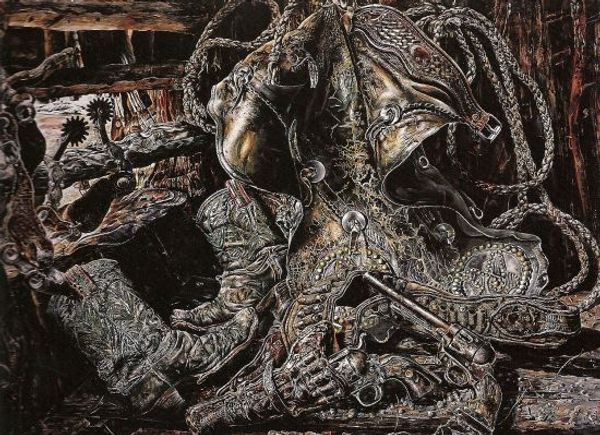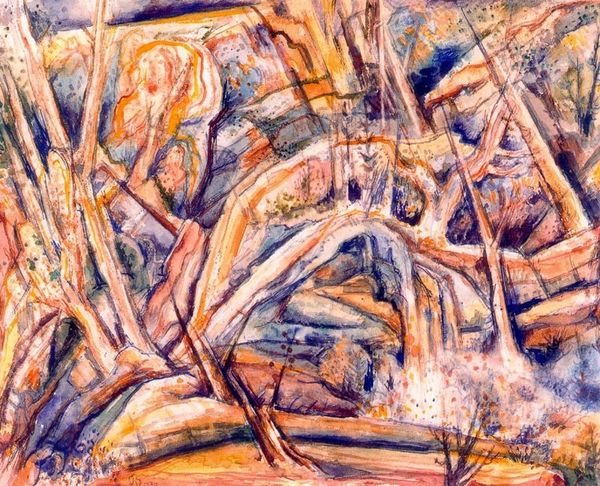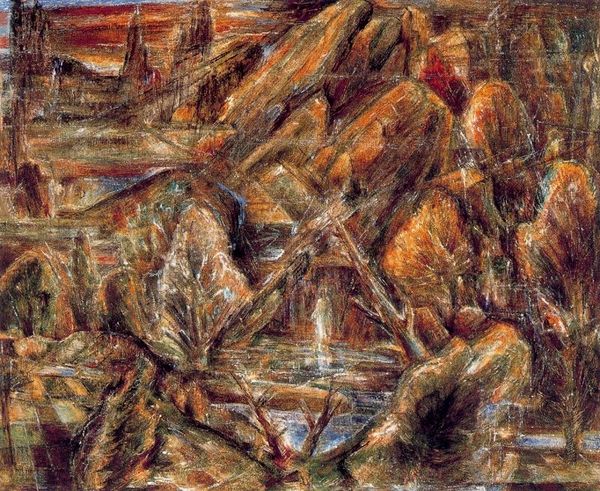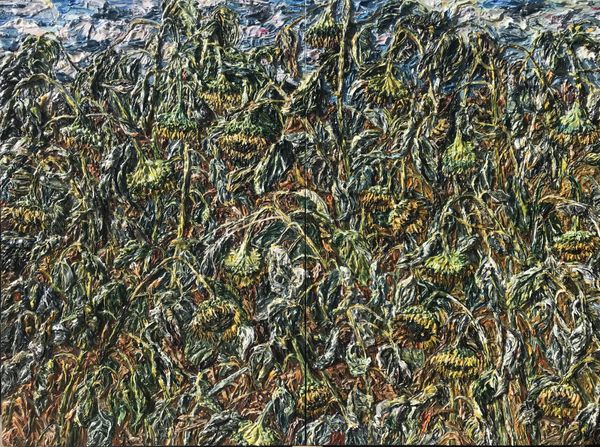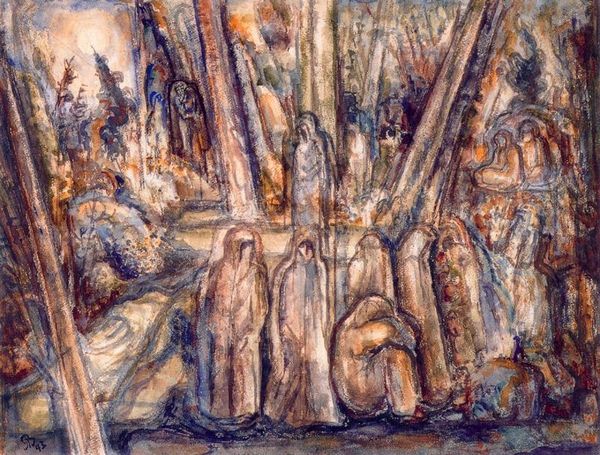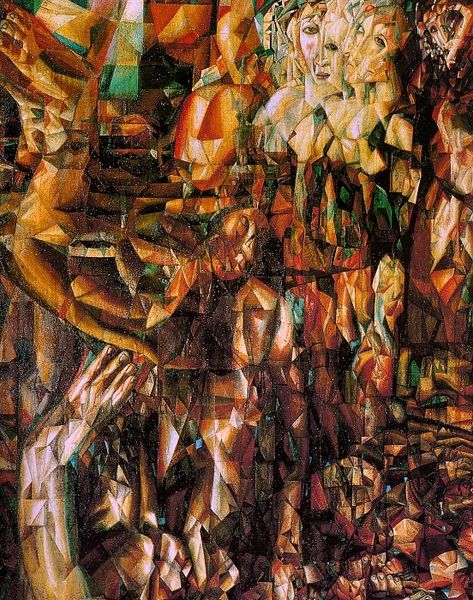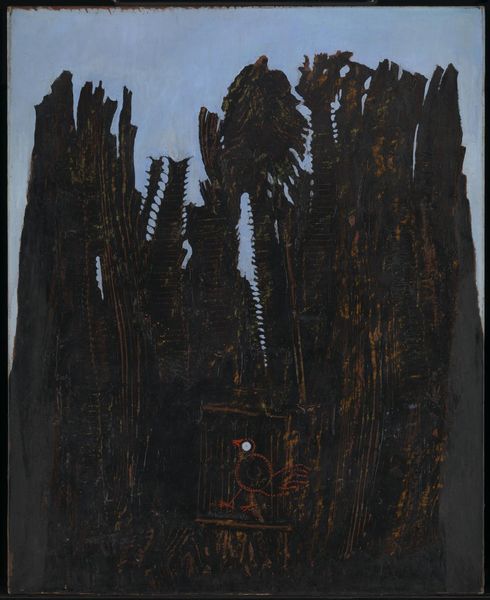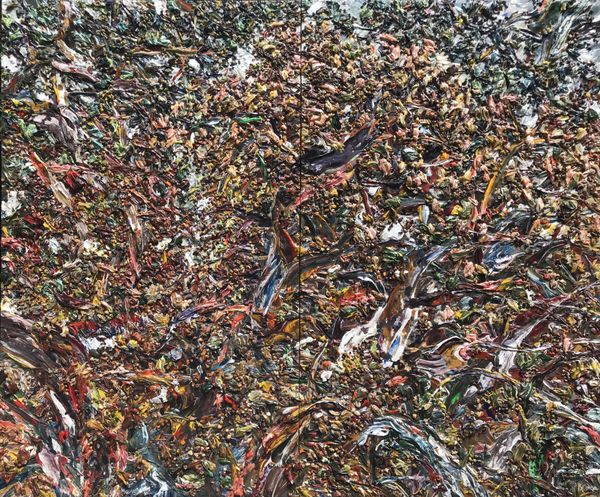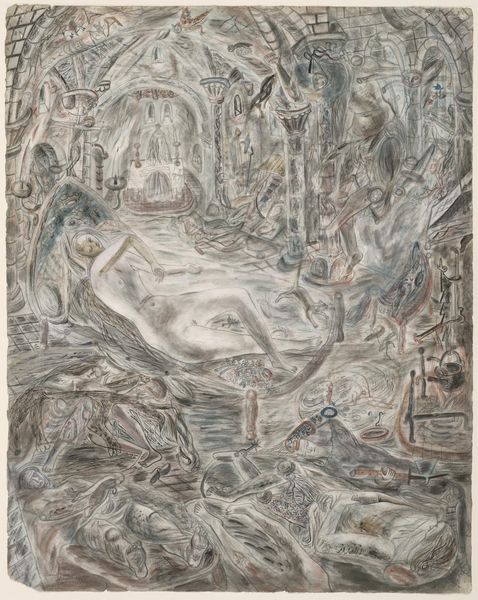
Dimensions: 67.6 x 97.8 cm
Copyright: Ivan Albright,Fair Use
Editor: Ivan Albright's "The Rustlers" from 1962 is a deeply textured oil painting that also incorporates assemblage. I’m immediately struck by how claustrophobic it feels. It’s hard to distinguish any clear forms amidst the density. What historical perspectives can help us unpack this unusual piece? Curator: Considering Albright’s involvement with the Chicago Imagists, we can see “The Rustlers” as part of a larger movement questioning artistic conventions and embracing the grotesque. How do you think the social climate of the early 60s influenced such imagery? Did Cold War anxieties play a part? Editor: That makes sense, given the unsettling atmosphere. The palpable decay definitely hints at a broader cultural anxiety. It's hard to ignore how his matter painting and assemblage moves "realism" into a gritty depiction of real-world deterioration and social and psychological corruption. Curator: Precisely. This period witnessed increasing anxieties surrounding industrialization and its effect on humanity. Note how Albright used those impasto applications. The heavy layers almost act as a metaphor for societal burdens or perhaps suppressed psychological states. Do you see the influence of Abstract Expressionism here as well? Editor: Now that you mention it, yes. The dense composition and reliance on texture definitely echo the expressive surfaces found in Abstract Expressionism, even as the artwork diverges into an expressionist figurative representation. The difference is, however, that it seems far more deliberate in its symbolic form than something purely abstract would be. It moves expressionism from interior gesture, to external statement. Curator: The piece indeed embodies social commentary. Considering that his paintings like Picture of Dorian Gray were used in Hollywood productions, what statements might "The Rustlers" make on art's role and image manipulation? Editor: It feels like an aggressive rejection of Hollywood’s often idealized portrayals of reality. I see now how Albright uses decay to critique the deceptive facades in society. Thank you! Curator: I agree! It certainly leaves us pondering the uncomfortable realities we often try to ignore. It's interesting how art like this holds up a mirror to our fears, prompting critical self-reflection on societal and personal vulnerabilities.
Comments
No comments
Be the first to comment and join the conversation on the ultimate creative platform.

